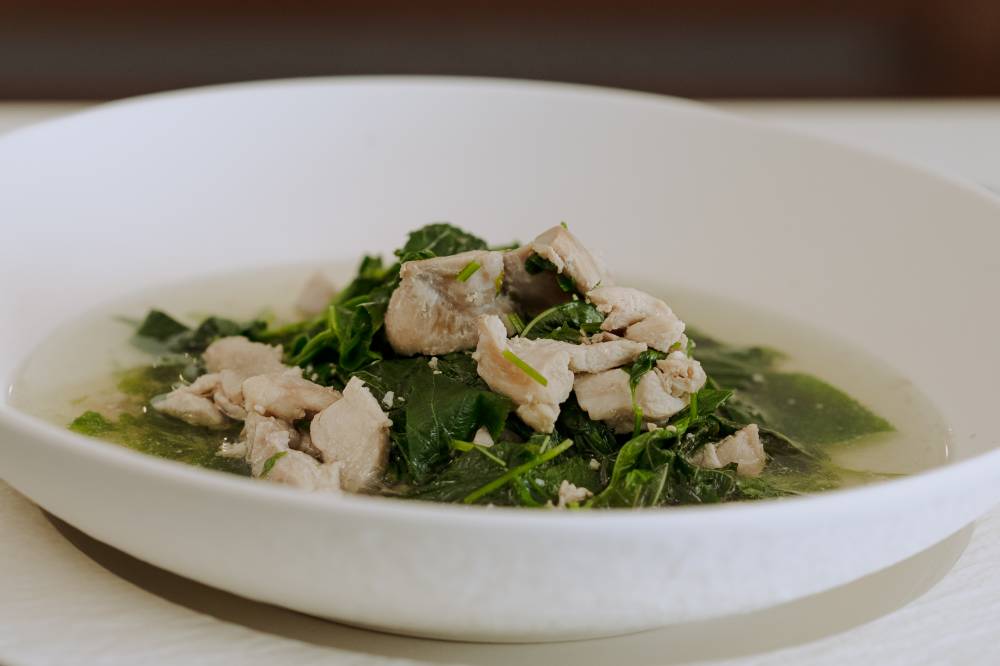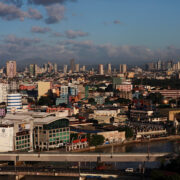Focusing on a breastfeeding mom’s health and nutrition

August brings attention to breastfeeding all over the world, and raises awareness about its importance for both mothers’ and babies’ health. With the numerous recorded and proven benefits to both mother and child, it is well worth celebrating the triumphs of breastfeeding mothers.
But there is another side to it: the mothers who are unable to breastfeed or choose not to. Beyond the celebration lies a very complex issue that is deeply personal and often polarizing.
The pressure to breastfeed
There is an overwhelming pressure on new mothers to breastfeed. From the time of pregnancy to delivery, mothers and mothers-to-be are inundated with the message “breast is best.” There are even some hospitals in Manila that automatically room in babies to give the mother no choice but to bond with the baby and breastfeed—no matter how tired or arduous labor was.
As a first-time mother, my breastfeeding experience was far from perfect. I dreaded the sound of my crying and hungry baby as well as the pain of the actual feeding. I was even more discouraged—thinking that maybe I had no milk and that I was doomed to fail as a mother.
I later on found a breastfeeding coach who helped me position the baby and gave me encouragement. She also highlighted the importance of keeping myself healthy and well-rested—something new moms tend to forget.
Before meeting her, I was a zombie for about two weeks—not knowing the difference between night and day but also happy, tired, sad, and scared all at the same time.
But what about the moms who can’t?
In South Korea, new mothers have the option to check into postpartum facilities, where they focus on recovering undisturbed. Babies and mothers are separated and brought together only to breastfeed, with the assistance of an expert. The proper nutritious food is meticulously prepared for mothers, indicating the importance of nutrition.
But there are mothers, who, due to circumstance or choice, do not or cannot breastfeed. I myself grappled with this possible stigma as I struggled in my first few weeks.
Perhaps it was postpartum hormones—combined with voices in my head that told me I had to breastfeed to be a good mother and for my baby to do well. For many others, breastfeeding is emotionally draining, physically painful, and sometimes logistically challenging. Or they’re just not comfortable doing it in public.

Working moms also lack clean relaxing facilities to be able to pump at work. I remember work colleagues pumping in the less-than-plush bathrooms at work for 30 minutes at a time—storing their milk in the pantry.
I myself ended up pumping milk for both my babies for over one year for my son and for two years for my daughter, as I found this schedule to be more beneficial for myself. I was not at my baby’s beck and call but could schedule it around the times I wanted to rest or sleep while still providing milk.
The decision to fully pump milk took a toll on me mentally and took a lot of convincing myself that this was okay. That the ordeal did not have to be as challenging as it was. I struggled with these thoughts: of not being a worthy mom, that I somehow was not as good as others who were able to breastfeed easily, or that I was not trying hard enough.
This kind of mental torture was brought about by comparing myself to the “breast is best” messages out there. “If I’m not giving the breast directly, I’m not the best.”
Finding ways that work
Eventually, I read several blogs and articles written by others who had decided to pump. I found a place where I belonged, and yet I still had a nagging feeling that maybe I still wasn’t as good. It took about a year for me to shake this feeling.
Looking back, I wish I had the confidence to make my decision without dragging down my self-esteem so easily. What’s best for the baby is the best you as a mom can do, and that’s enough. My mom reminded me that I myself was not breastfed and was a very happy healthy formula-raised baby, as were many others born in my generation.
While breastmilk has many benefits such as antibodies or the ability to change in taste depending on what the mother eats (thereby giving the baby a taste of “real” food ), modern infant formula has certainly come a long way in terms of its nutritional quality. And yes, it is perfectly capable of nourishing a baby.
Because ultimately, trying your best to give the baby breastmilk and making a decision that is right for your body is no one else’s business.
Nourishing yourself, the right way
When it comes to nourishing yourself as a new mom, however, this is where I insist that it needs to be done well. Many new moms forget themselves in the days after having a baby. But there is no one more important than the new mother herself—and what she eats, how much adequate rest she gets… all that matters.
There are foods, such as fatty and sugary foods, that will cause more lumps and pain when breastfeeding. And frankly, even unwanted calories. It’s really best to eat whole and natural food after having a baby, especially when you’re trying to produce milk.
In the Philippines, we are very fortunate to have many local vegetables that are galactagogues—milk-inducing vegetables—that are always available and very affordable. Malunggay, saluyot, alugbati, and green papaya are considered galactagogues and are all nutritious sources of iron, vitamins, and minerals.
Many moms will eat tinola for days, as it contains both malunggay and green papaya. I myself was tired of this, as I had malunggay with halaan for three months straight.
But after starting Mesa ni Misis, I found many new uses for these local greens, including recipes that come from other countries. My new favorite way to cook saluyot is molokhia. Saluyot, also known as Jew’s mallow, is used in Lebanese cuisine as a soup or a stew. Blended with coriander and garlic, this stew—which is also made with chicken—is a fresh new way to consume salyuot.
Plus, it helps new moms with milk production and can even double as a soothing dish for anyone who is in need of warm and hearty nourishment.

Molokhia with chicken (can substitute for vegetable broth)
Ingredients:
1 whole chicken
1 tsp coconut oil
4 cups water
4 bunches saluyot, around 2 cups’ worth
1 bunch wansoy (cilantro)
4 cloves garlic
Salt, to taste
Procedure:
1. In a pot, boil the whole chicken for an hour, or until tender.
2. Remove the chicken from the pot and remove the flesh from the bones. Do not throw away the broth. Set the chicken pieces aside.
3. Mince the wansoy and garlic.
4. Heat up a stock pot and add one teaspoon of coconut oil.
5. Add the garlic and wansoy and stir fry for one minute.
6. Add back the chicken pieces.
7. Remove the leaves from the stalk, then chop up the saluyot. You’ll want to make them as small as possible.
8. Add 3 to 4 cups of the chicken broth into the pot.
9. Add the chopped saluyot and cook until wilted. Then season with salt to taste and serve hot.





















